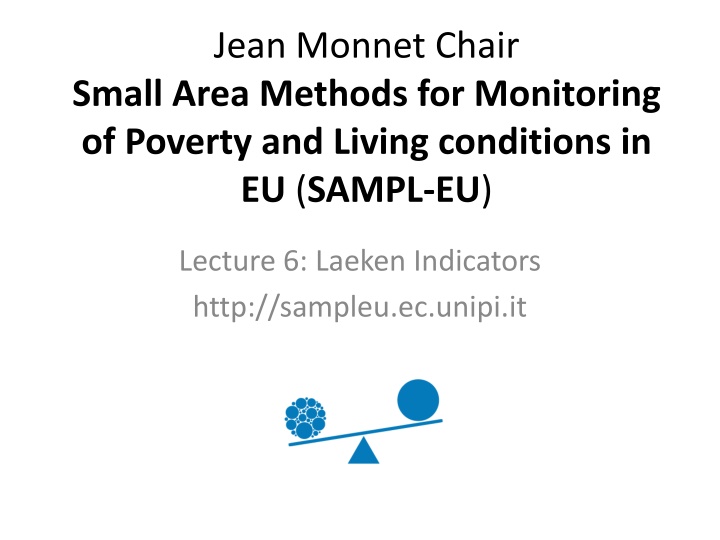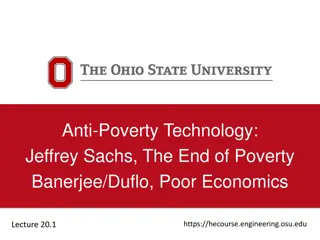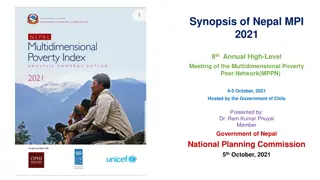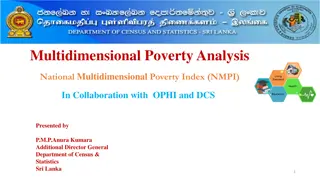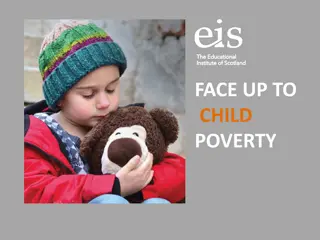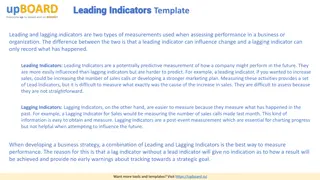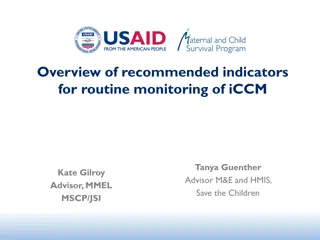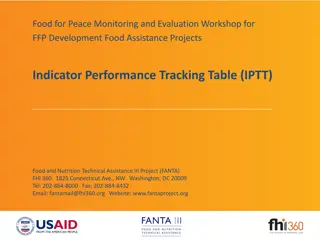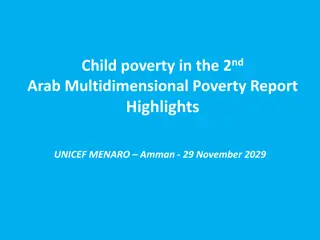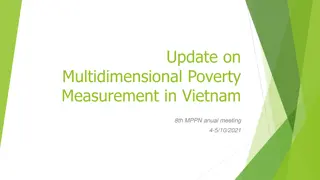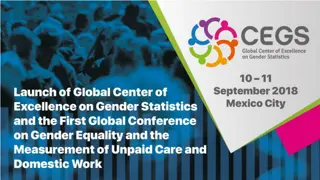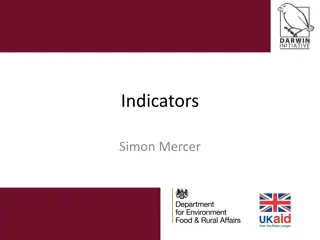Monitoring Poverty and Living Conditions in the EU: Laeken Indicators Overview
The Laeken European Council established 18 statistical indicators for social inclusion in 2001, covering areas like financial poverty, employment, health, and education. These indicators offer a comprehensive view of social exclusion, emphasizing its multidimensional nature and the need for a balanced representation of EU social concerns.
Download Presentation

Please find below an Image/Link to download the presentation.
The content on the website is provided AS IS for your information and personal use only. It may not be sold, licensed, or shared on other websites without obtaining consent from the author.If you encounter any issues during the download, it is possible that the publisher has removed the file from their server.
You are allowed to download the files provided on this website for personal or commercial use, subject to the condition that they are used lawfully. All files are the property of their respective owners.
The content on the website is provided AS IS for your information and personal use only. It may not be sold, licensed, or shared on other websites without obtaining consent from the author.
E N D
Presentation Transcript
Jean Monnet Chair Small Area Methods for Monitoring of Poverty and Living conditions in EU (SAMPL-EU) Lecture 6: Laeken Indicators http://sampleu.ec.unipi.it
Laeken European Council the Laeken European Council in December 2001 endorsed a first set of 18 common statistical indicators for social inclusion, which will allow monitoring in a comparable way of Member States progress towards the agreed EU objectives.
Four dimensions od social exclusion These indicators need to be considered as a consistent whole reflecting a balanced representation of EU social concerns. They cover four important dimensions of social inclusion (financial poverty, employment, health and education), These highlight the multidimensionality of the phenomenon of social exclusion
Indicators Indicator 1a : At-risk-of-poverty rate by age and gender Indicator 1b : At-risk-of-poverty rate by most frequent activity and gender Indicator 1c : At-risk-of-poverty rate by household type Indicator 1d : At-risk-of-poverty rate by tenure status
Indicators Indicator 1e : At-risk-of-poverty threshold (illustrative values) Indicator 2 : Inequality of income distribution S80/S20 quintile share ratio Indicator 3 : At-persistent-risk-of-poverty rate by gender (60% median) Indicator 4 : Relative at-risk-of-poverty gap
Indicators Indicator 5 : Regional cohesion (dispersion of regional employment rates) Indicator 6 : Long term unemployment rate Indicator 7 : Persons living in jobless households Indicator 8 : Early school leavers not in education or training
Indicators Indicator 9 : Life expectancy at birth Indicator 10 : Self defined health status by income level Indicator 11 : Dispersion around the at-risk-of- poverty threshold Indicator 12 : At-risk-of-poverty rate anchored at a moment in time
Indicators Indicator 14 : Inequality of income distribution Gini coefficient Indicator 15 : At-persistent-risk-of-poverty rate by gender (50% median) Indicator 16 : Long term unemployment share Indicator 17 : Very long term unemployment rate Indicator 18 : Persons with low educational attainment
